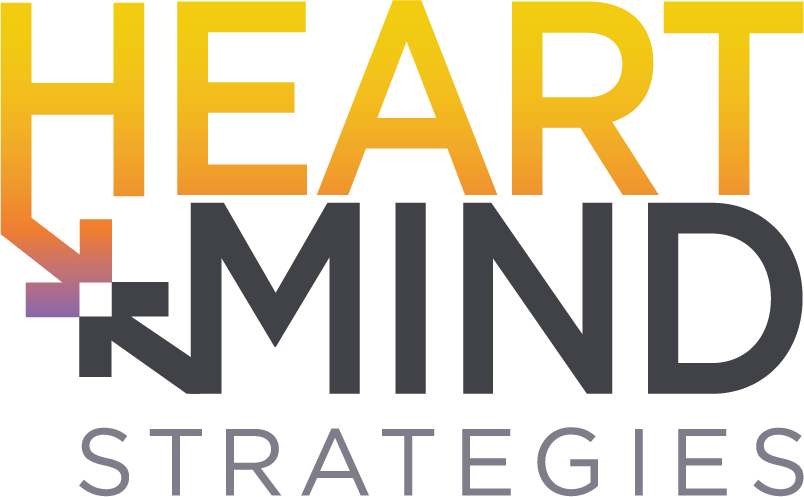Key Takeaways:
- AI Hype vs. Consumer Reality: Despite widespread AI adoption, only 33% of Americans feel optimistic about its future—highlighting a major disconnect between tech innovation and public sentiment.
- Trust Is the New Brand Currency: In the age of AI, trust isn’t just a compliance issue—it’s a competitive advantage that brands must actively build and measure. Every brand needs an AI Brand Trust Strategy.
- New Research Insights: A Heart+Mind Strategies poll reveals that nearly 1 in 5 Americans are seriously worried about AI, and 30% remain unsure—underscoring the need for empathetic, transparent communication.
- Emotional Readiness Matters: Consumers are not just evaluating what AI can do—they’re questioning why it’s being used and whether it serves their best interests.
- Strategic Brand Imperative: Forward-thinking brands are incorporating trust signals into brand tracking, message testing, and customer experience strategies to close the trust gap.
- Actionable Takeaway: To succeed with AI, brands must listen deeply, communicate clearly, and align AI use with consumer values and expectations.
When it comes to generative AI, the tech headlines are packed with breakthroughs, bold claims, and billion-dollar bets. But among everyday consumers, the sentiment is far more cautious—and that’s a growing challenge for brands.
In a recent Heart+Mind Strategies poll, we asked 1,000 U.S. adults how they feel about AI and whether its benefits truly outweigh the risks. The results reveal a skeptical public that’s not yet emotionally ready to embrace AI. As AI becomes increasingly embedded in products, services, and communications, brands must develop a thoughtful AI Brand Trust Strategy to bridge the gap between innovation and consumer confidence.
Only One in Three Feel Excited About AI
Despite the saturation of ChatGPT, Gemini, and Copilot in daily conversations, just 33% of Americans said they feel excited or optimistic about where AI is heading. Only 11% are “super excited.”
In contrast, 37% are nervous or uncertain, and nearly 1 in 5 (19%) said they’re seriously worried about AI’s trajectory. Another 30% are ambivalent and unsure what to think.
This contrast highlights a central tension. While AI may be everywhere in tech roadmaps and marketing, many consumers are still emotionally unprepared for it.
Benefits vs. Risks? It’s Nearly a Toss-Up
When asked whether the benefits of AI outweigh the risks, consumers were divided:
- 37% believe the benefits outweigh the risks
- 33% believe the risks outweigh the benefits
- 30% are unsure or have no opinion
Even among those who see more benefit than risk, enthusiasm is measured. Only 13% believe the benefits definitely outweigh the risks. Most are still reserving judgment as they watch how AI plays out in everyday life.
This is not simply a tech adoption curve. It reflects a deeper issue: a gap in trust.
Trust Is the New Brand Metric
Trust is becoming a strategic brand metric. It was even a central theme at this year’s Web Summit Vancouver, where more than 15,000 tech industry professionals gathered to explore the future of technology. Across panels and keynotes, the message was clear. In the age of AI, trust is no longer just a compliance issue. It is a competitive advantage.

That theme aligns closely with what we see in our recent poll data. Consumers are no longer evaluating only what AI can do. They are asking why it is being used and whether it serves their best interests.
AI adoption has surfaced new concerns about ethics, transparency, and digital identity. And in a market where only one-third of consumers feel optimistic, brands that communicate clearly and confidently will stand out.
RELATED: The Trust Gap: Why Data Security Messaging Should be a Top Priority for Tech Brands
This Is Where Research Becomes Essential
Understanding how trust is gained or lost does not happen by guesswork. It happens by listening. Research can uncover the emotional triggers behind skepticism, the language that builds reassurance, and the points in the customer journey where doubt emerges. It helps brands identify which claims increase confidence, which features need clearer context, and how different segments interpret AI-powered experiences.
And just as we track awareness, consideration, and loyalty, trust needs to be measured over time, not just assumed. Forward-thinking brands are beginning to incorporate trust signals and confidence indicators into their brand trackers, message testing, and customer experience work. This means going beyond vague sentiment and getting specific: Do customers understand what your AI does? Do they believe it’s working in their interest? Do they feel in control?
In a market filled with hesitation, tracking these signals provides early warning signs, competitive benchmarks, and opportunities to lead.
Bottom Line
AI has the power to transform customer experiences—but it’s trust that earns lasting loyalty. In a landscape shaped by skepticism and uncertainty, marketers have a unique opportunity to lead with transparency, communicate purpose, and build credibility that technology alone can’t achieve. A well-crafted AI Brand Trust Strategy is essential for bridging the gap between innovation and consumer confidence—and for turning cautious audiences into committed advocates. Connect with us to discuss how Heart+Mind can help you lead the way.
Survey Methodology: The survey consisted of 1,000 online interviews conducted April 1-11, 2025. Respondents for this survey were selected from among those who have volunteered to participate in online surveys and polls.
The data (approximately 1000 respondents) is gathered from of one of the largest online panels, which attempts to approximate a cross-section of the US population. To ensure representation of a wide variety of demographic groups we impose quotas by age, gender, and ethnicity based on US Census data for people aged 18 and older.
